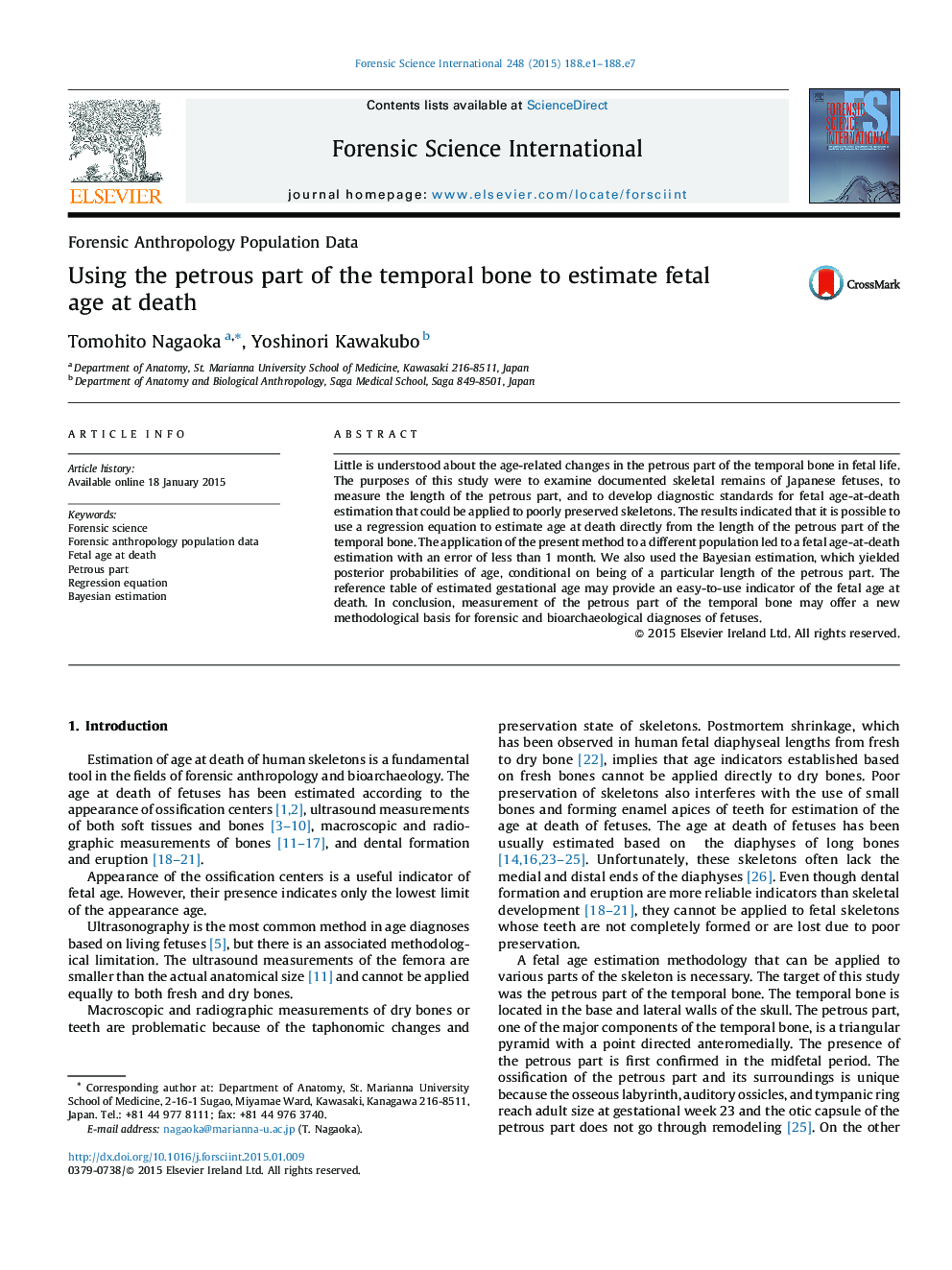| Article ID | Journal | Published Year | Pages | File Type |
|---|---|---|---|---|
| 95523 | Forensic Science International | 2015 | 7 Pages |
Abstract
Little is understood about the age-related changes in the petrous part of the temporal bone in fetal life. The purposes of this study were to examine documented skeletal remains of Japanese fetuses, to measure the length of the petrous part, and to develop diagnostic standards for fetal age-at-death estimation that could be applied to poorly preserved skeletons. The results indicated that it is possible to use a regression equation to estimate age at death directly from the length of the petrous part of the temporal bone. The application of the present method to a different population led to a fetal age-at-death estimation with an error of less than 1 month. We also used the Bayesian estimation, which yielded posterior probabilities of age, conditional on being of a particular length of the petrous part. The reference table of estimated gestational age may provide an easy-to-use indicator of the fetal age at death. In conclusion, measurement of the petrous part of the temporal bone may offer a new methodological basis for forensic and bioarchaeological diagnoses of fetuses.
Keywords
Related Topics
Physical Sciences and Engineering
Chemistry
Analytical Chemistry
Authors
Tomohito Nagaoka, Yoshinori Kawakubo,
